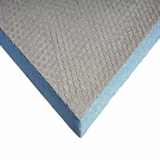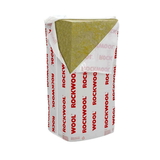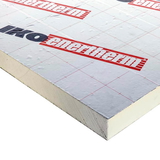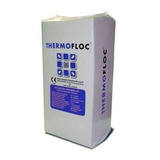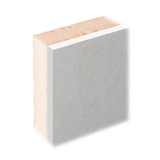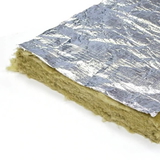- Blogs
- All you need to know about insulation
All you need to know about insulation

The benefits of adding insulation to your home are many. It saves you from sky-high bills by reducing energy consumption. Insulation increases the value of your home, by increasing the EPC ratings. It makes your building more energy-efficient thereby, taking Britain a step closer to its carbon neutrality goal.
It is profitable to install insulation in different parts of the house. The end goal always being to reduce energy loss in your building. Pipe and Duct Insulation makes the HVAC system work more efficiently. Insulation boards like PIR, provide effective thermal insulation to thermal insulation to wall and floors.
Mineral wool insulation on stud walls helps soundproof your home. Foil insulation rolls stapled to rafters can make your loft cosy and warm. You can also find a wide range of superior quality insulation online and save yourself the hassle of going to the local vendor.
But how does insulation work? Why is insulating your home or facility so important? What are the different types of insulating material available? We attempt to answer these basic questions in this blog.
But first off, let us look into how heat transfers between materials?
Conduction, convection, and radiation are the three ways through which heat transfers or moves from one material to another.
Conduction: Conduction is the process of heat moving along or through the fabric of the material, passing from one molecule to another. It can happen in gas, liquid, and solid states. For example, conduction is what makes the chocolate melt in your hand, eventually.
The ability to conduct heat depends on the material itself. In other words, if the insulating material has a lower thermal conductivity, it will transfer heat slowly, making it an excellent choice for insulation.
Convection: Convection is a mode of heat transfer found in liquids and gases. The density of a gas or liquid decreases as the molecules heat up, making it lighter. Warmer air expands as they become less dense and start moving upwards.
So basically, convection is the reason why lighter, warmer air rises in your home and cooler air sinks. The closed-cell foam pipe insulation or any other closed-cell insulation, for instance, inhibits heat transfer through convection as the tiny molecules are placed far apart in the insulating material, thus not letting heat transfer easily.
Radiation: The term radiation refers to transferring heat through space from one body to another. It exists in all states, solid, liquid, gaseous, and even in a vacuum.
The temperature difference, the distance between surfaces and their emissivity influence the rate at which heat transfers through radiation.
The emissivity of a surface refers to how easily it reflects thermal radiation. The low emissivity foil facing on a PIR board is a good example, as they reduce heat transfer through radiation.
So, heat transfer from one material to another is possible through any of the above ways.
What is the purpose of insulation?
When you insulate something, you are essentially wrapping it in a protective blanket to minimise heat transfer through the material. Insulation prevents heat from escaping or entering an enclosed space, like a building or a room. Insulating materials helps reduce the flow of heated air and sound between objects in contact with them.
The purpose of insulation is to prevent or restrict your home from losing heat through any of the above-mentioned ways.
How effective is insulation in preventing the transfer of heat?
The heating devices warm the air in your home. Since heat moves from a hotter to a colder space through conduction, this heated air spreads across seeking colder places like garages, crawl spaces and lofts, leading to a rise in temperature in these areas. Also, by heat transfer through convection, the warm air moves upwards, towards the roof.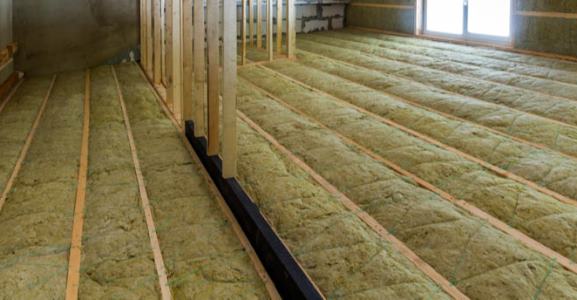
Glass mineral wool or fibreglass, which is the most common insulating material, has many tiny pockets of air in its fabric. When the hot air gets trapped in the material, it stops further heat loss, keeping your home cosy and warm.
When laid over and between joists, glass mineral wool loft insulation rolls prevent heat loss through the roof. The reflective foil insulation rolls, when stapled to rafters, reflects heat indoors. The cavity wall insulation restricts heat transfer between the outer and inner walls to a bare minimum. Even floor insulation helps you to prevent heat from sneaking out of your home.
Insulation is not only effective in winters but in summer as well. Just as it keeps heat from escaping in winter, it prevents heat from entering in summer.
Why should you insulate your home?
Insulation essentially ensures that the energy spent on heating your home via boilers and other heating devices does not go waste.
Some benefits of loading up your home with insulation include:
- Reduced stress on the heating and cooling systems.
- Easy to maintain the required temperature indoors.
- It improves the EPC ranking of your home.
- Pipe lagging protects pipes from freezing over, dust, condensation and increases the service life of the pipes.
- Insulating ductwork with mineral wool duct wraps enables an optimal functioning HVAC system.
- Effective loft, wall, roof, and floor insulation ensure that the heat does not ‘sneak out.’
- Insulation helps soundproof your home.
- When Insulation is installed in every part of your home, you will experience uniform temperature across your home.
- Insulation is good for your health. It makes your home warm and comfortable, thus protecting you from draughty conditions and associated health concerns.
- Most of the insulation nowadays has excellent fire resistance. With insulation as a fire barrier, you know you are safe.
- Pipe lagging when wrapped around hot water pipes, helps maintain the temperature of the hot water. It saves the energy that would otherwise be spent on re-heating it.
- Insulation reduces your carbon footprint.
Insulation in commercial facilities:
Insulation in commercial buildings is equally important, if not more. From simply a business point of view, installing insulation in commercial and industrial facilities makes the workplace comfortable and your employees more productive. It is much cheaper when compared to other ways of making your facility carbon-neutral or energy efficient.
Offices have more electronic systems, Plants have machines, all of which drastically increases the temperature in the workplace, making it uncomfortable. As a result, the air conditioning units will have to work harder to maintain the temperature, which means increased company costs. Insulation helps keep the workplace cooler.
Ductwraps effectively insulate ductwork, not only saving energy but also soundproofing them. Flange and Valve jackets reduce the energy loss from the valves and save time on maintenance when compared to hard, traditional insulation.
What is the best insulating material for you?
There are many different types of insulating materials available nowadays, so the choice can be quite overwhelming. But, before you pick an insulating material, you need to be aware of different values that determine the ‘effectiveness’ of the insulation.
R - value:
R-value measures the heat resistance of a material, i.e., how effective it is at insulating. Higher R-value means better resistance to heat flow, meaning better insulation. The R-value of a material depends on the material, its density and its thickness. Some other influencing factors are moisture and temperature.
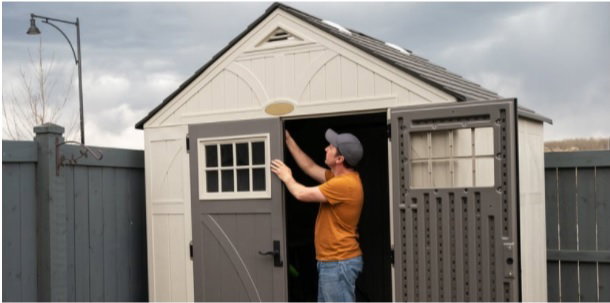
U - value:
The U-value measures how much heat is lost or gained through a given thickness of the material. It takes into account heat loss through all three principal modes: conduction, convection, and radiation. The finest insulating materials have a U-value close to zero, the lower the number, the better.
According to current building regulations, the elements in a new structure must have the following maximum U-values:
0.11 -0.18/m2k on the roof (Rafter and ceiling level)
0.16-0.28 W/m2k on the wall
0.16-0.25W/m2k on floors.
So, to simplify, a higher R-value means good thermal resistance, and a lower U value indicates excellent insulating properties.
What are the different types of insulating materials?
There are two basic types of insulating materials, each having many of its own subdivisions:
1. Closed-cell Insulation: As stated earlier in the blog, in the closed-cell structure, the molecules are far apart from each other, thus restricting the easy transfer of heat from one molecule to the other.
The closed-cell insulation is dimensionally stable. Since the molecules are placed far apart and are sealed from each other, they do not allow moisture to enter either. The high-performance foam pipe insulation is due to its closed-cell nature. Another example of closed-cell insulation is the PIR board.
2. Open-Cell Insulation: The best example of this type is mineral wool insulation. The wool insulation has many tiny air gaps in the fabric, which traps the heated air. This heated air may later, very slowly, be released back to its surroundings.
Insulation subcategories:
1. Batt Insulation: Also known as Blanket Insulation, it is the most commonly used insulation. 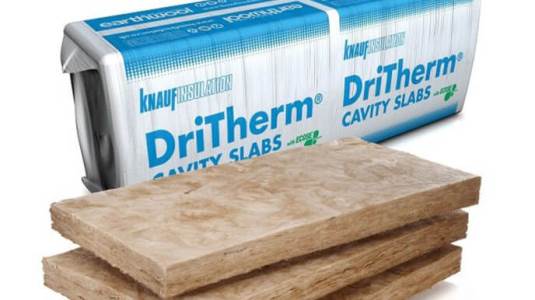 The insulating material is rock wool. It provides excellent thermal and acoustic insulation. It is used for loft insulation, wall insulation, cavity wall insulation, among others.
The insulating material is rock wool. It provides excellent thermal and acoustic insulation. It is used for loft insulation, wall insulation, cavity wall insulation, among others.
Blown-in Insulation- Insulation is blown into place in this case. The insulating material could be EPS beads, cellulose and others. Blown-in or loose insulation is used to fill cavity walls and as loft insulation.
2. Insulating boards: The best examples for insulation include PIR boards, XPS and others. These boards can be used for wall insulation, floor insulation Phenolic or mineral wool boards are also used for duct insulation. They can be closed or open types, with varying R and U-values.
3. Reflective Foil Insulation: As mentioned earlier, they effectively reflect heat and restrict heat transfer through radiation. They can be simply stapled to the rafters. They provide excellent roof insulation and are also moisture resistant.
Insulation installation:
No matter what type of insulation you choose, you must install it properly. Pipe insulation and loft insulation are more DIY projects. Installing cavity wall insulation, wall insulation, and floor insulation will require professional assistance. There is absolutely no point in spending hundreds of pounds to get your home packed with insulation if they are not installed properly.
Tiny gaps or spaces in between the insulation will collectively increase your energy bills and you may not even know it. Improperly installed pipe insulation can cause serious issues like pipe freeze and pipe bursts. It is best to ask professional insulation installers if you are unsure of what insulation must be installed where. They can also assist you in choosing the right insulating material.
In conclusion:
To find the best insulating material for your home, ensure that you know the R or U value of the insulating material. You can find high-quality insulating materials that can help reduce the energy costs of your home, no matter what your budget may be.
Insulation is important - in your home, as well as in any commercial or industrial setting. Effective ventilation and properly installed insulation are what will make your home and building more energy-efficient and Britain carbon neutral.
For top-quality insulation online visit Buy Insulation online. We provide free delivery in major cities and plant a tree for free on every order.

Samuel Hitch
Managing Director
Buy Insulation Online.
Leave A Reply
Your feedback is greatly appreciated, please comment on our content below. Your email address will not be published. Required fields are marked *






